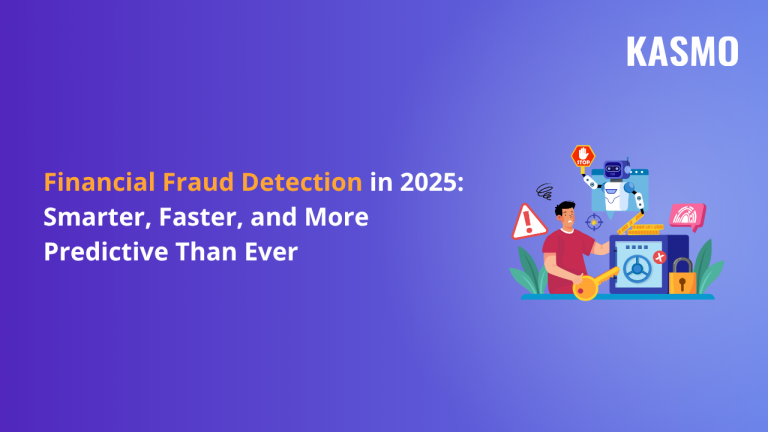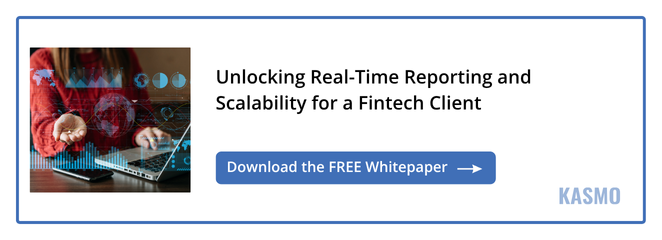Introduction
Fraudulent activities have become more prevalent, complex, and damaging. The increase in online transactions, digital payment methods, and a surge in demand from customers to get better and advanced security on all transactions, have made it challenging for firms to focus on re-building their financial fraud detection strategies and methods.
Financial scams like phishing are increasingly leading multi-national corporations to lose millions. But financial fraud isn’t just about monetary loss. It damages brand reputation, reduces consumer trust, and exposes organizations to suffer regulatory penalties. For financial institutions, the ability to detect fraud quickly and accurately is now more crucial than ever.
Financial fraud detection methods in 2025 are definitely set to take a turn for the better. Now, financial services firms are looking forward to using technologies and methodologies used to identify and stop fraudulent activities in near real-time. As cyber threats evolve, financial services firms need to get at pace with them to solve these challenges. With modern data cloud platforms like Snowflake, financial services firms can now identify patterns, flag suspicious behavior, and adhere to compliance and regulatory policies easily.
In this blog, we’ll explore the different types of financial fraud and understand why it is crucial for companies to move from traditional approaches and adopt modern solutions and technologies. We’ll also highlight how Snowflake’s data-driven capabilities make financial fraud prevention easier, more efficient, and more accurate.
Types of Financial Frauds
Financial fraud comes in many forms, each with its own set of challenges:
Credit Card Fraud
Credit card fraud remains one of the most commonly reported financial crimes. Fraudsters gain unauthorized access to a person’s credit card number and make illegal purchases or cash withdrawals. How do these fraudsters create challenges for both users and financial services firms? Through ATMs, phishing emails, or luring customers to purchase credit cards from anonymous and unauthorized sources.
This damages credit scores for users, and they lose huge amounts of money. Businesses and banks absorb chargebacks, penalties, and losses from returned merchandise. Organizations using traditional financial fraud detection methods struggle to keep pace with real-time fraud attempts, making it difficult for them to establish trust within users and the market.
Account Takeover
Account takeovers (ATO) are increasingly common due to poor choice of passwords and frequent data breaches. Fraudsters use stolen credentials to hijack accounts and perform unauthorized actions like transfers, purchases, or even changing account settings to lock out the rightful user. ATO attacks are stealthy and often look like normal activity, making financial fraud detection difficult.
Payment Fraud
Payment fraud refers to any unauthorized digital or physical transactions, including stolen cards, fake wire transfers, and fraudulent e-commerce purchases. Fraudsters can even create duplicate identities to trick systems into approving fake accounts that facilitate payment fraud. With the rise of Buy Now, Pay Later (BNPL) platforms and peer-to-peer payment systems (are digital platforms or apps that facilitate direct money transfers between individuals, bypassing traditional intermediaries like banks.), detecting these schemes early is crucial.
Money Laundering
Money laundering is a more complex fraudulent activity, wherein criminals attempt to nullify profits gained from illegal activities, through a sequence of seemingly “legitimate” transactions. They may use front companies, cryptocurrency, or international shell accounts to derail authorities. Detecting money laundering requires tracking connections across accounts, analyzing volumes of transaction data, and ensuring financial services adhere to KYC/AML compliance. However, if you are using traditional systems you might struggle with preventing money laundering.
Insider Fraud
Insider fraudulent activity comes from trusted individuals, such as employees, contractors, or partners, who misuse their access to profits. These insiders may manipulate internal systems, falsify records, or leak sensitive data for gaining financial advantage. Because they operate within the organization, insiders can often bypass detection methods. This makes insider fraud one of the most dangerous and difficult to detect.
How Can Financial Fraud Detection Become Easy with Snowflake in 2025?
Snowflake AI Data Cloud platform provides an ideal foundation for financial services firms to implement real-time, scalable financial fraud detection methods and strategies. Its unified data platform empowers financial services teams to detect, investigate, and prevent fraud faster than ever before.
Centralized and Unified Data Access
Fraud detection is only as effective as the data it relies on. Traditional banks often struggle with fragmented data which leads to data silos. Snowflake solves this challenge by empowering financial services firms to get seamless integration across customer profiles, transaction logs, geolocation data, and third-party sources. Unifying data and allowing access to the integrated data empowers financial institutions get a 360-degree view of each transaction and customer data, which is critical for spotting unusual patterns.
Real-Time Fraud Detection with Snowpark ML
Using Snowflake’s Snowpark ML, financial institutions can build machine learning models that operate directly within the Snowflake environment. These models can detect fraudulent activities in real time, such as:
- Transactions from unusual IP addresses
- Abnormally high purchase volumes
- New device logins from foreign locations
- Sudden changes in account (user) behavior
Facilitates Seamless Integration with External Data
By leveraging Snowflake, financial services firms can access real-time data from vendors, stakeholders, customers, and employees. These can enrich internal datasets and provide deeper fraud detection insights.
With Snowflake, now financial services can:
- KYC (Know Your Customer): Validate customer identities and behavior.
- AML (Anti-Money Laundering): Identify fraudulent activities across financial channels.
Build Native Apps for Internal Use
Organizations can build custom fraud detection apps directly on Snowflake using Native App Frameworks. These apps facilitate faster collaboration between data scientists, compliance teams, and risk analysts—all within a single platform. For example, a financial company can deploy an internal app that visualizes high-risk transaction clusters across geographies and flags them for review.
Kasmo, a true-blue Premier Partner of Snowflake, helped a Fintech client consolidate their data from multiple sources and create a unified platform for reporting which helped the company to make better data-driven decisions.
Download this whitepaper here and explore the benefits achieved by the Fintech client.
Fraud Prevention Methods to Follow in 2025 and Beyond: Best Practices for Financial Institutions
Fraud detection is reactive; however, fraud prevention is proactive. As fraudulent activities become sophisticated in financial services, here are some top fraud prevention methods every financial institution should consider in 2025:
Strengthen Authentication Protocols
Implement multi-factor authentication (MFA) for all sensitive actions. Use biometric verification and dynamic tokens to minimize the risk of stolen credentials. Additionally, leveraging device fingerprinting and geolocation tracking will help you verify users more accurately.
Deploy Continuous Behavioral Analytics
Analyzing user behavior over time can help financial services companies detect fraud. A sudden change in login habits, transaction amounts, or time of activity can signal foul play. By continuously analyzing behavior, companies can intercept fraud before it escalates.
Risk-Based Transaction Scoring
Assign dynamic risk scores to each transaction using AI. Low-risk transactions can be processed automatically, while high-risk ones can be flagged for manual review. This reduces challenges for users while enhancing protection.
Educate Employees and Customers
Many financial scams start with human error, like clicking on phishing links, sharing OTPs, or using weak passwords. Regular training and awareness campaigns can reduce these vulnerabilities significantly.
Leverage Cloud Platforms and Partner with Kasmo
Adopt platforms like Snowflake and partner with Kasmo to get the best fraud detection strategies in 2025. Kasmo’s Snowflake certified experts will help you scale, store and analyze your data effortlessly. Our experts have leveraged Snowflake to create solutions that offer real-time analytics, automation, and integration capabilities that traditional systems lack.
Conclusion
Financial Fraud detection methods are rapidly evolving. The BFSI industry is focusing more on creating fraud prevention strategies for financial scams rather than on reactive methods. Traditional systems and data silos are two of the major reasons why financial services firms are losing millions of dollars due to delayed preventive actions.
By understanding the types of financial scams, and implementing robust fraud prevention methods, organizations can stay one step ahead of fraudsters. But to truly change the way these organizations deal with fraudulent activities, financial leaders must embrace advanced data technologies and cloud platforms that provide real-time, scalable, and intelligent detection.
With platforms like Snowflake, financial services firms can unify data, power AI-driven models, and comply with KYC and AML regulations all within a single ecosystem. If you’re looking to modernize your financial fraud prevention strategy, Kasmo offers the capabilities, speed, and expertise you need to protect your organization and customers.




